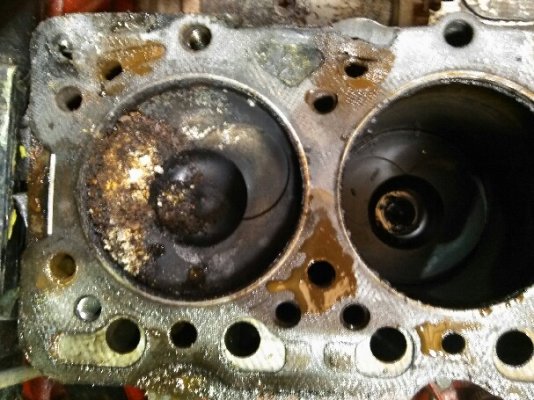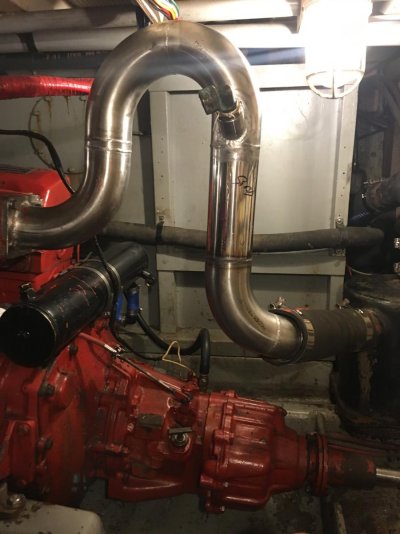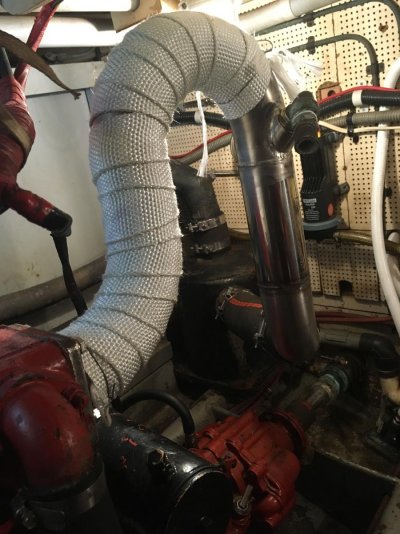BeeJay
Senior Member
If engine was running fine the last time you shut it down, I doubt it was a dropped valve or damper plate issue. Those tend to be noticed when engine is running.
If it won't move in either direction, I suspect coolant weeped into a cylinder and has the piston stuck. Sort of supported by the stuck valve.
I don't think the stuck valve has the whole engine stuck. Usually starter has enough grunt that a stuck valve will bend a pushrod or engine will still turn the other way.
Can also drain a qt of oil out of bottom of sump and see if there is any coolant present. If it got into a cylinder, some will drip past ring gaps. Only works if sump drain fitting is on the true bottom of the pan.
Since you already have the injectors out, try fishing a skinny poly tube down the injector hole and when it hits piston (actually might go in piston bowl), suck on it and see if you find coolant.
Can also get one of those cheap borescopes that plug into a phone. A skinny one can be fished into the injector hole.
Depending on what you find, I'm thinking pulling the head is likely.
Yep - I think your on to it Ski. Can you tell from the pick if maybe the valve is sitting on the seat (as in not stuck) and has a bent push rod?. I suspect that you would have to compare it with another valve with clearance or spin the push rod. Either way I suppose it doesn’t help any with the diagnosis. Time to lift the lid and solve the mystery. I agree with you - most likely stuck piston.





